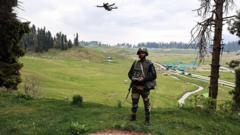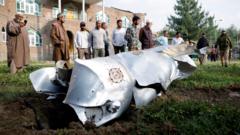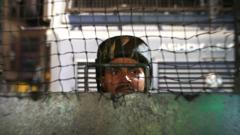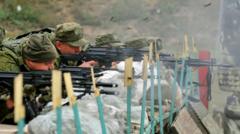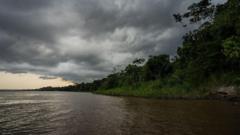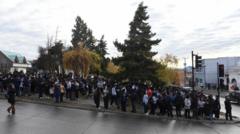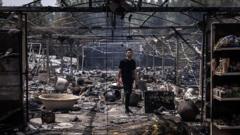The wildfires, now the deadliest in South Korea's history, continue to spread, with emergency services struggling to contain the devastating blazes.
Devastating Wildfires Kill 18 in Record-Breaking Disaster in South Korea
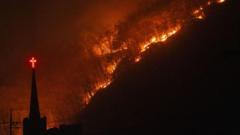
Devastating Wildfires Kill 18 in Record-Breaking Disaster in South Korea
Southeast region faces unprecedented crisis as authorities report thousands evacuated and historical sites destroyed.
The recent wildfires in South Korea have tragically claimed the lives of at least 18 individuals and left 19 injured, marking a catastrophic event in the nation's history, according to the latest figures released by the Ministry of the Interior and Safety. Acting president Han Duck-soo described the ongoing situation as "rewriting the record books" for wildfires in the country. Over 23,000 residents have been evacuated, and numerous structures have been severely damaged, including priceless cultural heritage sites.
A firefighting helicopter crashed in the mountainous region of Uiseong county on Wednesday, prompting an investigation into the cause of the incident. Authorities have mobilized thousands of firefighters and approximately 5,000 military personnel, supplemented by helicopters from the U.S. military stationed in the region, to combat the blazes that have been described as unprecedented. The national fire agency has escalated the crisis response to the highest alert level, a first for this year.
Historically, wildfires in South Korea are rare, and fatalities associated with them have been uncommon. However, the current crisis has escalated rapidly, making these wildfires the deadliest ever recorded in the nation’s chronicles. Approximately 17,000 hectares of forest have been destroyed, categorizing the calamity as the third largest in terms of area affected.
One of the significant losses includes the destruction of the Gounsa Temple, a Buddhist site established in 618 AD, alongside several other historically significant structures. The acting president expressed deep concerns over the loss, noting that strong winds are thwarting firefighting efforts. Rain, which could significantly help mitigate the fires, has been forecasted in limited amounts over the next few days.
Han vowed that once the crisis is under control, the government will undertake a comprehensive review of the fire response efforts and enhance future preventive measures. Due to ongoing dry conditions resulting in fewer rainy days, the frequency of wildfires this year already surpasses previous records, with 244 incidents reported, indicating a marked increase from last year.
The wildfires, which ignited on Friday in Sancheong County, have now spread to adjacent municipalities including Uiseong, Andong, Cheongsong, Yeongyang, and Yeongdeok, deepening the crisis within the region.
A firefighting helicopter crashed in the mountainous region of Uiseong county on Wednesday, prompting an investigation into the cause of the incident. Authorities have mobilized thousands of firefighters and approximately 5,000 military personnel, supplemented by helicopters from the U.S. military stationed in the region, to combat the blazes that have been described as unprecedented. The national fire agency has escalated the crisis response to the highest alert level, a first for this year.
Historically, wildfires in South Korea are rare, and fatalities associated with them have been uncommon. However, the current crisis has escalated rapidly, making these wildfires the deadliest ever recorded in the nation’s chronicles. Approximately 17,000 hectares of forest have been destroyed, categorizing the calamity as the third largest in terms of area affected.
One of the significant losses includes the destruction of the Gounsa Temple, a Buddhist site established in 618 AD, alongside several other historically significant structures. The acting president expressed deep concerns over the loss, noting that strong winds are thwarting firefighting efforts. Rain, which could significantly help mitigate the fires, has been forecasted in limited amounts over the next few days.
Han vowed that once the crisis is under control, the government will undertake a comprehensive review of the fire response efforts and enhance future preventive measures. Due to ongoing dry conditions resulting in fewer rainy days, the frequency of wildfires this year already surpasses previous records, with 244 incidents reported, indicating a marked increase from last year.
The wildfires, which ignited on Friday in Sancheong County, have now spread to adjacent municipalities including Uiseong, Andong, Cheongsong, Yeongyang, and Yeongdeok, deepening the crisis within the region.


